It’s the Subtle Things
Part 1
I often think that woodworking by hand delivers results that surprise those extolling the virtues of machine methods and the accuracy machines deliver. I doubt that the accuracy I achieve is as good as they might think, but my end result is for me most likely what I want rather than that which a machine gives. I don’t want a machined product but more than that I don’t want a machine-cut dovetail, mortise and ten joint or a housing dado from a cutterhead.
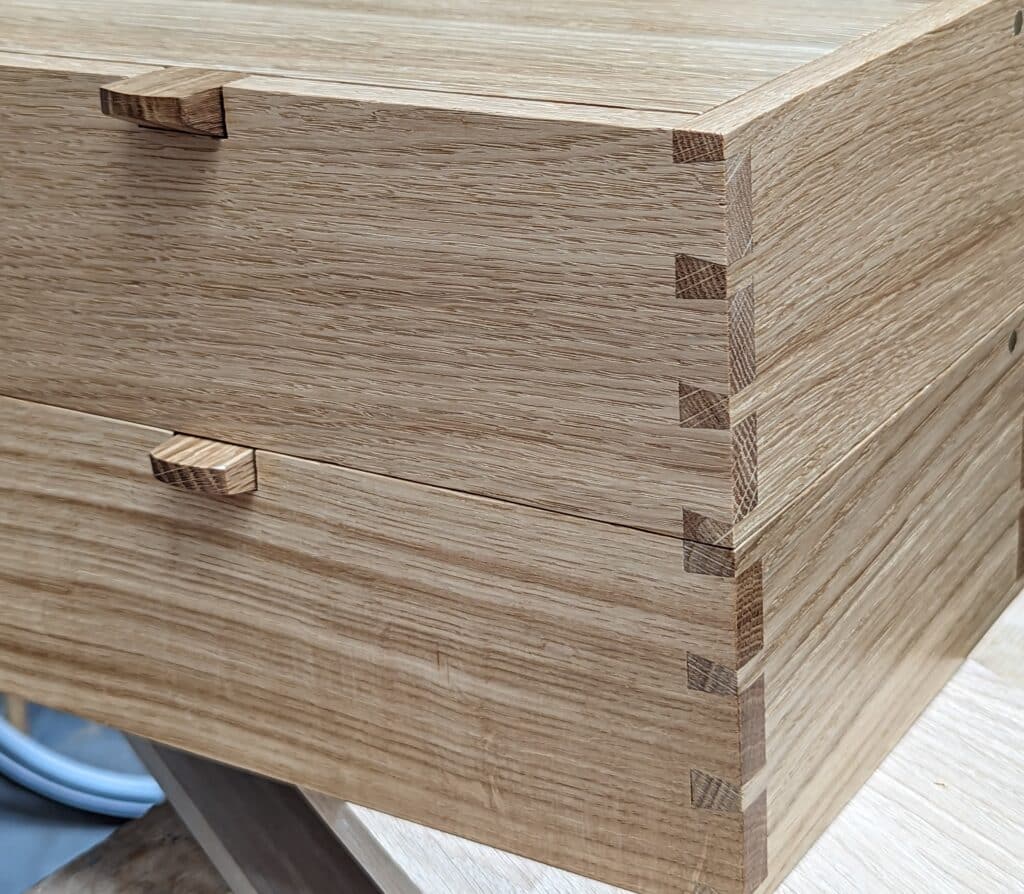
My world is, of course, intentionally very different to most others and especially those within the industry of furniture making. I think it’s fair to say that most furniture makers and woodworkers, 98%, anyway, use machine-only methods except where nicking out a corner for a hinge recess cut with a power router is needed, to square things off.
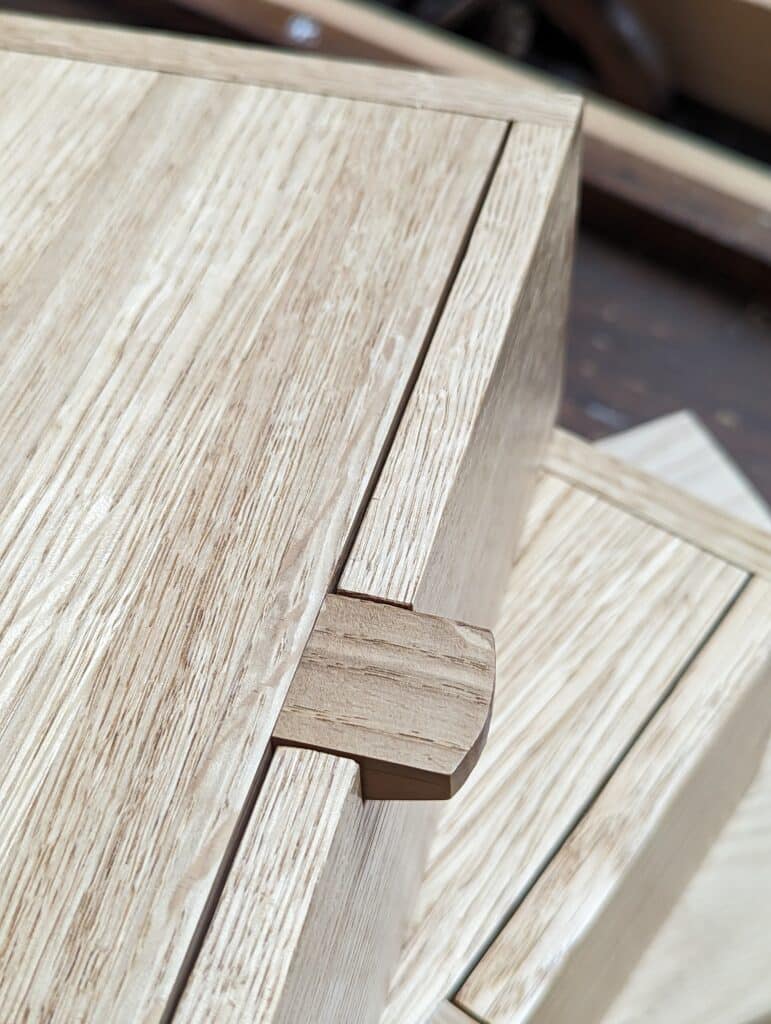
It’s just that we with hand skills can deliver a stroke that counters the inaccuracies of an adjacent piece in the twinkling of an eye and the subtle twist of a wrist. The advantage of working inaccurately far outweighs the intolerance of machinist legalism for me. I can whisk off a thou’ in a split second and end up not just looking good but doing good and then feeling just perfectly fine too. My out-of-square edge leads the door quietly and gently into its recess to leave a paper-thin line around the door’s rim that looks like a thread of cotton stretched taut from point to point in perfect thinness. It’s done without fuss and a half-width part-length stroke feathered in at a slight tilt that makes the whole length of the gap so even it cannot be believed even in the seeing of it being done in front of them. Mostly it’s their belief that the machine will always, always do things better that blinds them to the reality of skilled work bringing the reality of ancient technologies into play. It’s about remembering that these technologies not only worked but worked exceptionally well when a man made just one piece ior two. No, it’s important to see that it simply did not keep pace with the industrialisation of work and people who became lifelong factory fodder. Machinists usually do not see this. I know of one person who went to a premier furniture school in hope of becoming a furniture maker. he poured himself into the three year course and gave the college his £30,000 debt which he will never pay off just so he could spend the next 12 years pumping MDF into cutter heads and teeth. The main difference for him is he’s in substantial debt but he gets weekends off.

My demonstrations are mostly wasted on unbelief because though they others me make many cuts at all sorts of angles, depths and widths in different woods using just hand tools they don’t actually believe what they just saw or, worse still, even, they refuse to admit what they just saw with their own eyes. The truth is this though, they can’t believe it. The word ‘admit‘ means to let it. They won’t let truth in.
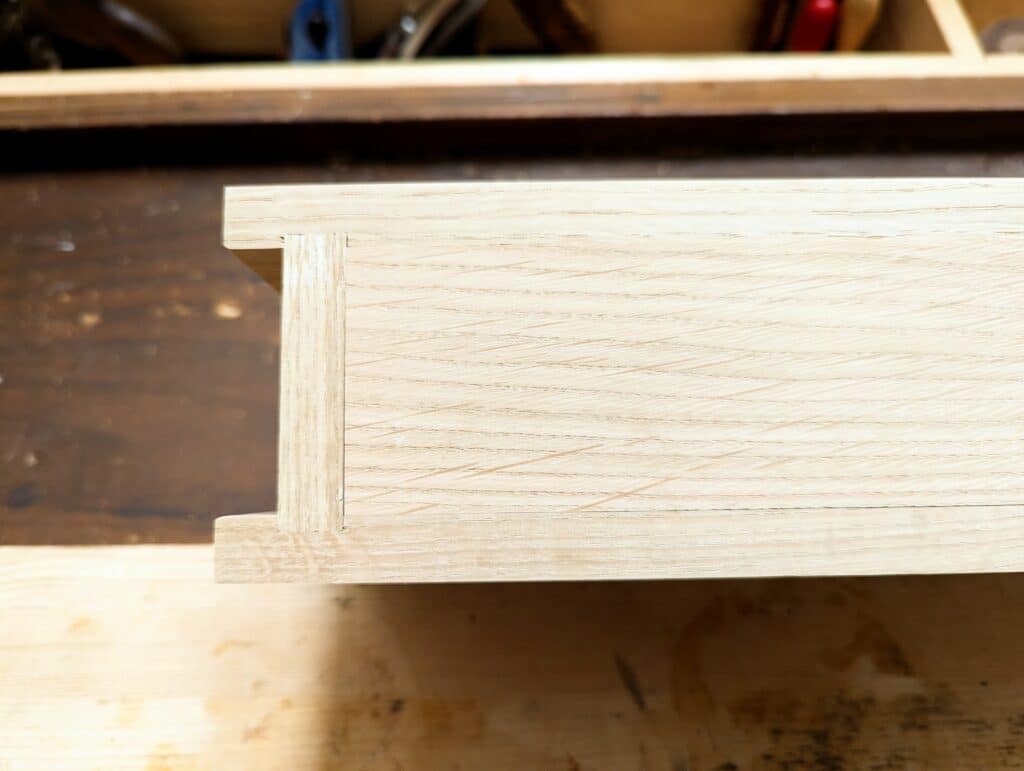
So I ask myself, ‘Can it be the intolerance that affects their perspective or can they not believe that a man skilled with his hands can plane a true ninety along a length of wood a few feet by eye and hand and feel alone?’ And if two edges are out of square as equal opposites to create a true, inline dead flat without using a square or a sliding bevel, a straightedge or a line drawn to test what’s felt and gauged and judged by feel alone can that never be relied on in the outcome of a man’s work? Does their unbelief negate the actual act of what we do? Machinists on the other hand must be intolerant of variation or discrepancy in all things machined. What we might accept as nearly okay and, well, good enough can never be tolerated in machining wood because it is very difficult to machine in defects like out of parallelity, uneven depths, inequalities like that. Near enough is usually never near enough to the mark if a discrepancy can be visibly seen so my declaration of ‘perfect‘ to myself would never be perfect for those who know nothing of hand-tool woodworking beyond what they have read or heard. You see, it’s in the doing of hand work with hand tools that equips you to compensate, micro-adjust a mismanaged item and negotiate a compromised outcome that wastes absolutely nothing by way of energy or material or indeed an acceptably finished and stunning piece. Is this because I set myself a lower bar than most or that we hand tool woodworkers are still evolving into full-time machinists? It’s neither, of course and may that never be too. We sentients dig deeply to attach ourselves with a wide range of interactive senses to the work and working and that includes the unconscious ones that translate and transform information into action into outcomes. We have to steer wood and tools and energies as transformative powers designed to deliver new shape by cutting edges we control by sight and sound and our sensitivity within a few square inches of our vises.
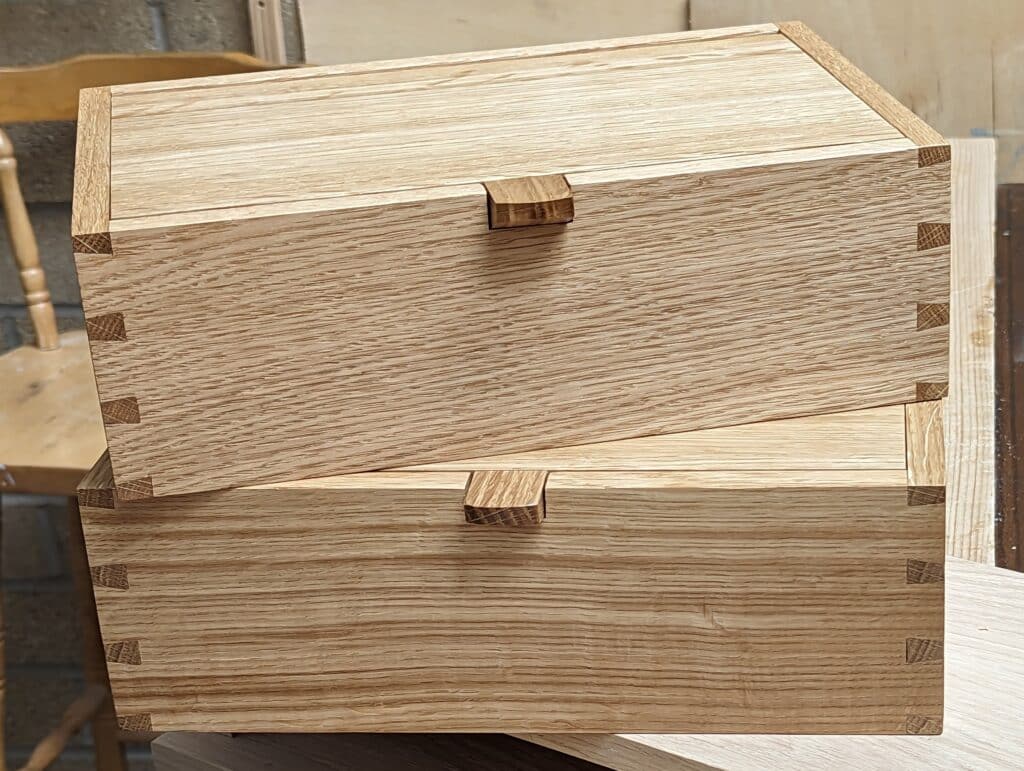
I can speak of fibre arts to some degree and sewing all the more. My mother served her apprenticeship as a Belgian dressmaker and spent most of her life making wedding dresses and such. I’d watch her for hours as I read my books by her cutting table and see her create her own patterns as templates to cut to. There was no one-size-fits-all dress pattern for her to work to. Like me, she sketched an outline of a concept first onto her notepad with its plaid lines. She’d show her customer the outline and then measure her to create a pattern from rolls of brown paper. An hour or two later the paper was pinned together and worn by the woman having the dress made. After she had left the scissors came out and the fabric was cut and pieced together with pins. Designing was in her blood as it is in mine.
There was a time when a hand-made dress was admired even for the basic skills of sewing that it took to make it. Then came the age when handmade was to be mocked because, well, it was unsophisticated. There are indeed two types of hand-made looks. One has a quality to it that is just unsurpassed in terms of craftsmanship. Every stitch, though ever so slightly different to the ones either side, would lay aligned in the fabric in such a way that it looked as though it was placed more as a gem than a mere cotton stitch. The other hand-made dress type has a clunkiness to it in the same way last year’s cell phone or laptop might look and feel a year after it was made.
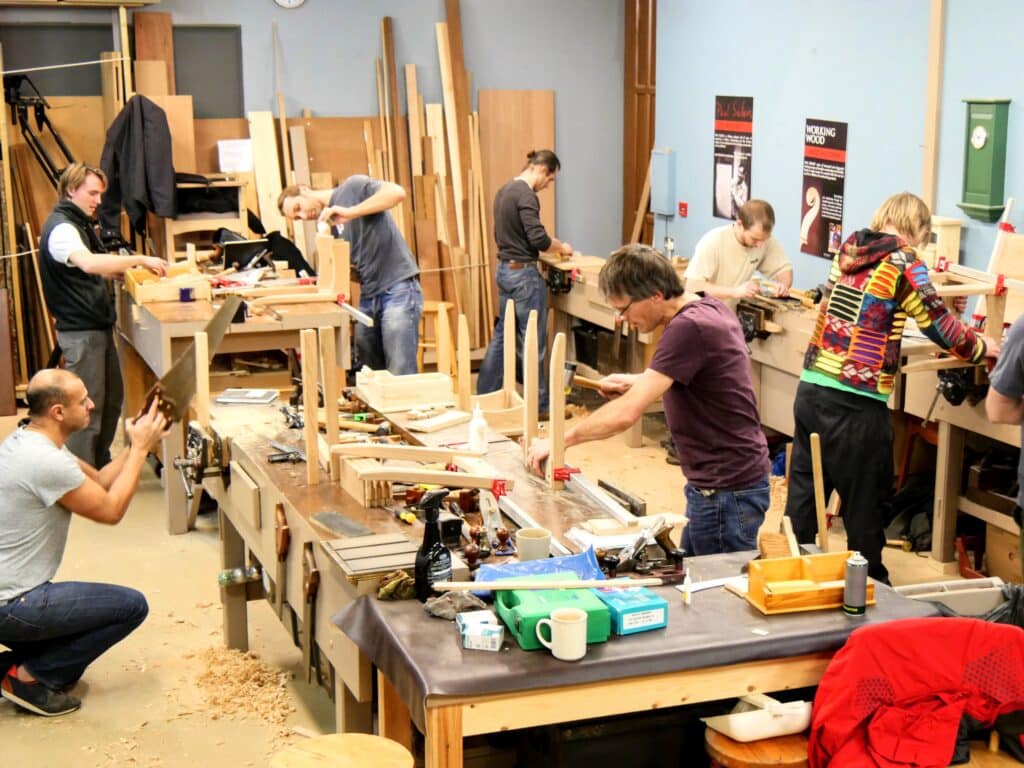
I don’t know that apprenticeships in woodworking and joinery, furniture making and the then existing but fast dying-out-other woodworking crafts and trades were really as structured as most woodworkers in amateur realms I meet or have met around the world in this age might truly think. In the 1960s we saw apprenticeships one-on-one diminish and technical colleges try (failingly) to take over under the guise of supplementing the loss by sitting students en mass in classrooms rather than in the mentoring classic of one-to-one engagement at the bench. I hear of the German training here and the Japanese training there but I wonder if this is not sometimes the romantic West seeing green grass on the other sides of other countries’ and cultures’ fences. One thing that does strike me is that some cultures have deep levels of respect for the elders of the craft: something that seems to have gone with each successive generation for six and more decades. I saw the demoralising results of disrespect in some of the older men I worked under in my apprenticeship. It was in the subtle and not-so-subtle comments that spilled out of them more than once in a given day. I think wars do that to working people.
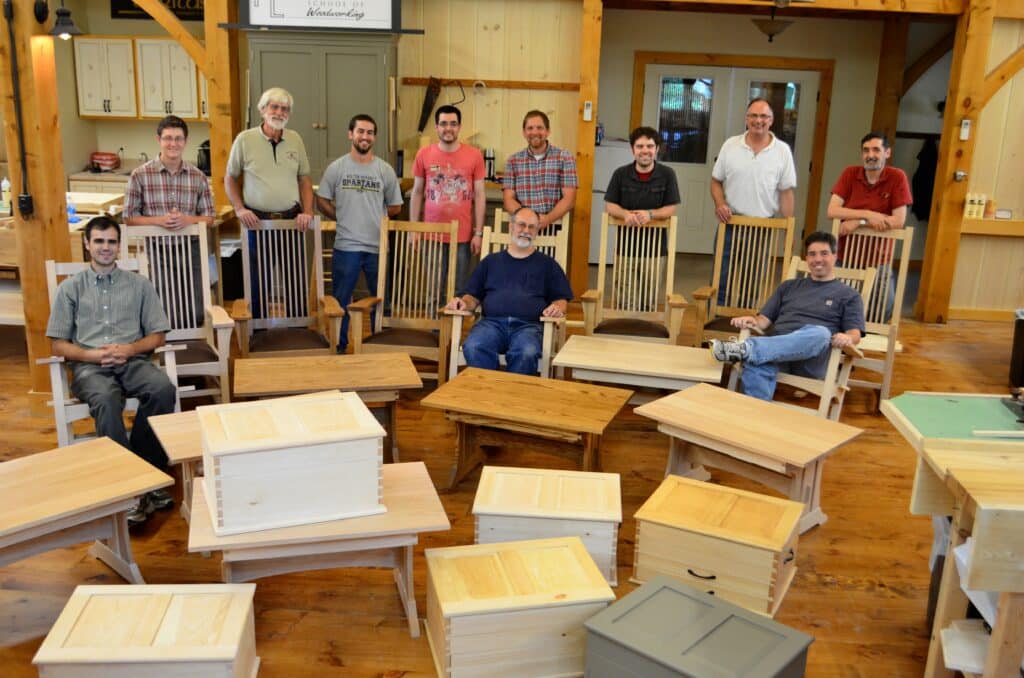
It’s the strangest thing to dwell on it today and compare apprenticeships to my hands-on classes, courses and the apprenticeships I’ve offered and trained others by. There was never any measure of disrespect from any attendee anywhere that I can recall once I started teaching. I always avoided any external support or control from organisations, institutions, government-supported apprenticeship schemes, education institutions or financial support that required me to co-sign for a student, or apprentice for their support. I did provide free instruction to those who could not afford a course or an apprenticeship. No apprentice ever paid me for any apprenticeship and no apprentice ever made anything for me or my business. Where these apprentices gained the greatest benefit was in working close by and through their personal focussed attention. When artisans earn the skills they are expected to have they seem always willing to pass along what they know to the new emerging generations. If there is no respect then it soon and readily becomes obvious and unless there is a substantial change then the apprenticeship will end by the choice of the artisan. My most recent experiences have caused me to reconsider where craft training will end up. Changes come as a result of many things and not the least of which is the impact of social media platforms entertaining rather than offering true training. Of course, that’s not what they are about. I understand that so I leave it parked there.
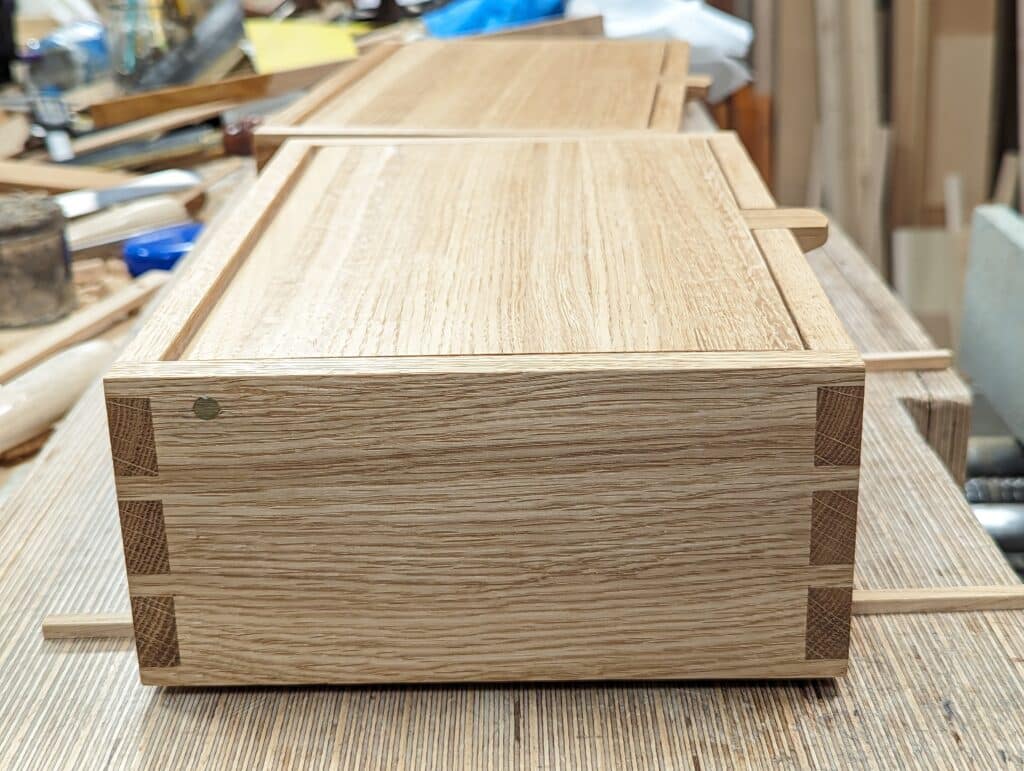
Respect means to literally look again; to look twice makes you think about the worth of something. If and when you look twice at a well-practised artisan, watch the hands, the mental acuity in moving the body, lifting the material, placing it, placing the tools to the work and such, stitching it, shaping it, splitting and carving it into what it is not. If there is a key ingredient missing in our super-fast digitally paced digitally spaced life today it’s the recognition of the need for respect…deep, reciprocal respect.
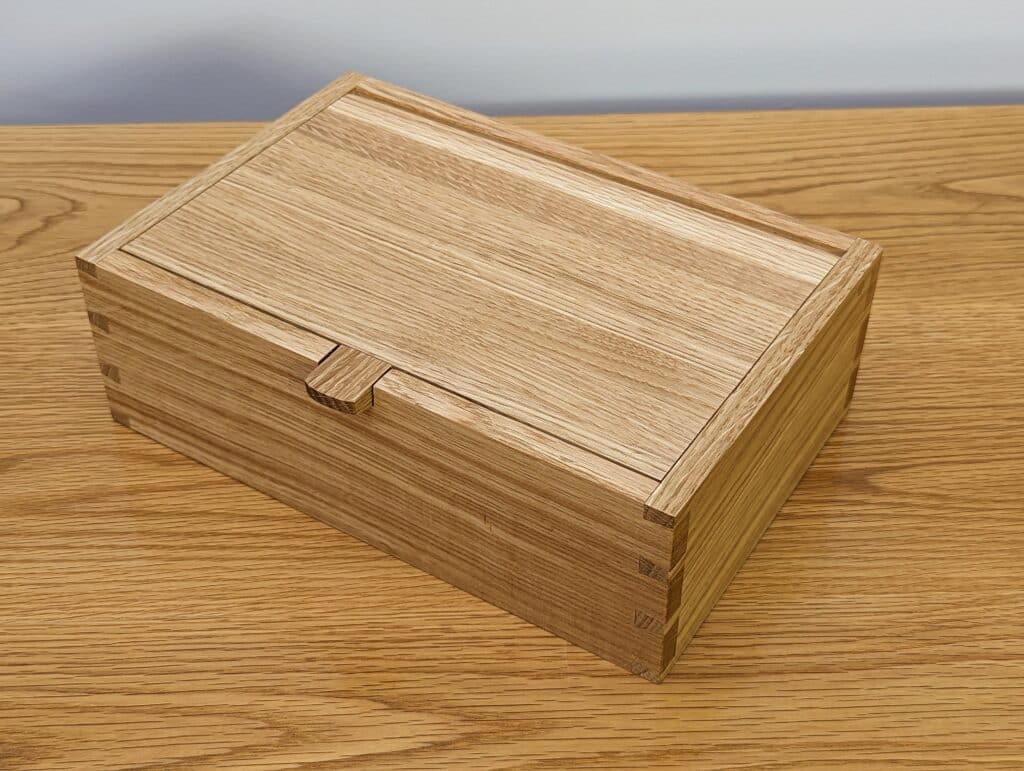
There is a part two to follow


I would have benefited immensely from an apprenticeship, I’m certain. Maturity came very late for me, and I think that someone guiding me would have sped that process up significantly. However, I think you’re correct about respect, and I’m not sure I’d have recognised that in my teens. I was quite book-smart, which probably showed as arrogance, in a world where trades and manual work were discouraged. I’d have been good as a plumber or carpenter, although I’d definitely have fallen into the trap of the next great tool purchase. It is that constant de-basing of the role itself that likely erodes that respect further too. I watched a video recently where a well known youtube “chippie” was discussing how pre-cut stairs dramatically reduced time and allowed him to do more work (he meant: take on more jobs), where every part of his job could suffer some form of automation with the best new tool (you mention chiselling the corners of hinges in the blog, well you can get a corner chisel for that now!). All that was left was volume. Quantity of work. There is no doubting the quality of his finished work, it was exceptional, but what about the quality of doing the work? Why has the customer, or consumer more aptly, forgetten about this? That’s what industrialisation has given us. Quality has no place in industrial processes. The final “product” is everything, and its logo and branding replace embedded quality and story. It’s a shame.
I also was very late to mature; in my forties. I agree that I would have been a good tradesman, had I not come from a white collar family. The first white collar family in a long line of farmers. Fate.
I am presently reading a very interesting book (in French) “Une démocratie sans autorité?” – Alain ERALY – ed. érès -2019.. He makes an interesting distinction between authority and domination.
The fact is: we are dominated by a lot of things for which there is nor identifiable nor legitimate authority. For example, It becomes nearly impossible to do a lot of things without buyng a computer or a smartphone and suscribing for a connection. That is a domination without authority. Authority is replaced by market forces.
In our civilisation of hyper-individualism, where some even deny the existence of the general interest, any authority (in the various acceptances of the word) is looked at as being suspect and seen a priori as a domination.
For me, you are an authority in woodworking; even though, I am not obliged to follow you.
I would be very interested in an English translation of this.
In regards to higher education and its high cost and commensurate debt burden relative to its low utility, I have often said something along the lines of: I don’t thing there is a large conspiracy to turn young adults into indebted wage slaves but the end result is the same as if there were a conspiracy.
Very similar to the idea of domination without authority.
I made a mailbox post this yesterday, very simple and crude but done with hand tools, and draw-bore instead of power tools, glue, and screws. Self reliance is an act of rebellion against the domination of market forces.
I did a six year apprenticeship as a millwright in the 60’s which was supplemented by one day a week at technical college where I studied for a HNC. The combination of 4 days work and one day in college was invaluable to me ultimately becoming a well rounded chartered design engineer.
I stayed on the tools until I was 30 developing those engineering skills that I have found invaluable, but no way could I have become a mechanical design engineer without all that maths, mechanics, draughting and materials science I learned in college. I am grateful to both and in many trades the technical colleges provided an excellent supplement to the work on the tools.
I think there’s an organic look to hand work that we can read at a glance- even if we don’t consciously realize it.
And the reading of that human touch, and the time and effort it suggests, triggers our empathy.
We are a species of tool users from the beginning, and something in us recognizes the work of hands.
I agree, well said 🙂
That said, I bought a wooden spoon and fork which I assumed were quite recent, machined using a computer. But happily later discovered that they about 100 years old, Welsh and hand carved (including impressively 3-D carved vine leaves and grapes).
I have a couple of other carved pieces: 2 lizards and leaves; Balinese hand carved we think.
And a small Thai box with an incredibly detailed front view of an elephant. I can’t believe it is hand carved but equally know of no machine that could carve wood so small and so detailed. It now holds tallow to lubricate a wooden threaded bench vise!
I have been following Paul Sellers for years and reading the comments posted after the blogs. The last line of your post is one of the most meaningful things I have read. Not only is it insightful, it is also very accurate. Thank you for putting your thoughts to words for the rest of us to see.
Very nicely put Mike. My sentiments exactly.
All the best, Michael
Thanks for you blog Paul. Every time I read one it’s a source of information and insight. I’ve been (trying to be) a woodworker for almost 30 years now. I took a single high school class (turning a baseball bat was the most fun for me) and let the craft sit until my wife and I were looking at furniture for the 1st time. I said, “I can probably make something better than that, and it will last longer also.” She replied, “Well do it”. I’ve built all of our case work in our house and a lot in my son’s house also by machine. I’m slightly jealous of hand tool workers who turn out beautiful things. I know it takes years and years of practice and patience. I’m trying to put more time in for both of those in but haven’t gotten there yet.
Thanks again for the inspiration.
As imperfect people we seek perfection. Sadly we seek perfection to such a point where we freeze in fear of a mistake.
I am a classical musician. I play and teach violin and viola. A Beethoven symphony is an amazing piece of musical craftmanship. However, it is appreciated by so few in our culture. There are so few opportunities for kids to receive guidance in appreciating the nuances of classical music, the playfulness of its melody, the depths of its emotion or the drive of its rhythm. I wonder if appreciating the craft found in hand made furniture is similar. We are trained by our culture to appreciate the latest clothing style, the newest car model or the newest home decor but not to see and appreciate craftmanship. Perhaps, borrowing from Sylvain’s ideas, those with the authority to guide us are drowned out by the forces dominating us.
Thanks Paul. Lots of good information in this post. I appreciate you going over the day-to-day realistic view of what hand-crafted joinery looks like. The biggest challenge of learning virtually is not seeing what others are doing. I am not trying to compare myself to an individual. What I am trying to understand is what are realistic expectations. This post and the images help.
Sort of related to this, my daughter needed a nightstand in her room. I found a design both my wife and liked and I built it. I think I only had about 1 year of experience of working on weekends before I started it. It was a huge challenge and quite frustrating, but I kept going (I quickly learned the importance of reference faces). At one point, I even stopped for a year on this project and went to others because I wasn’t happy with it. I even considered discarding it. I then hunkered down and finished it. Sure, there is more slop in the drawer fit and more gap in the dovetails than I would like. However, it came out nice, my daughter likes it, and it will hold up just fine. No one who sees it, points out these flaws. Things I have built since have better tollerances as I have improved, which is to be expected. Yet, I wouldn’t get better unless I keep on making so I keep going and try not to be too upset if something isn’t perfect. And yes, sometimes I need to remake a part; and that’s fine. It’s all better than sitting on the couch over the weekend watching TV.
Paul,
As I read this and other of your writings especially when you mention the years you spent in Texas, it makes me wonder some things.
Did you find that there is or was less acceptance of your work here in the US than there in the UK? And was the attitude in the UK more or less accepting before you moved to the US than it is now that you are back in the UK?
Have you seen the attitude change over the years as there have been “advances” in machine tools, get worse, or remain about the same?
Was there/is there any difference between attitudes here in a “young” country and those that you find in a place where you can see and drive by centuries of examples of hand crafted excellence?
On the other hand, do you find the dependance on machines to have affected “craftsmen” equally, worldwide?
You mentioned those affected by having been at war… could it be the industrialization which grew out of rebuilding from WWII that contributed more than anything else? The need to replace so much, so quickly, to so many in dire need? That done by workers who had to be so precise and accurate on the machines of war they had to manufacture for that war, that the need for that accuracy followed them back into peacetime?
Hard questions, maybe, to answer…
Paul
In my view, America and Americans proved to be a hundred times more supportive of had work than anywhere I ever saw in the UK, period. There is no question in my mind that rebuilding the world damaged by the ravages of war became the precursor to the wholly accepted industrialising of woodworking in the so-called advanced cultures which definitely threw out the baby with the bathwater when they dumbed down skills and the need for skills in every area of making. I think we live with an emerging generation that cannot even see skilled work being carried out in this day and age even though I do see how it takes skill to work computers which in turn make on our behalf.
this was a really deep article. we have folks that went to war in thebMiddle East for the past twenty years and are dealing with the dehumanizing effects in their middle age. not good stuff. maybe some Paul Sellers tranquility through woodworking would do them some good.
also whats with people freaking out and mass shooting schools? could be we lost the one on one closeness that working in a real apprenticeship provided? maybe it is just the psychopaths get themselves the big guns and go to town. who knows? would be nice if there were more humane connections and less industrial capitalist relations in my view. what do i know?
Hi Paul. Let me say that I enjoy and have learned a lot reading your blog and book. I am a hybrid woodworker using both machine and hand tools where and when I feel appropriate for the task at hand and according to my my skills. From my perspective, we all spend a bit too much time promoting “how I do it” and too little time on alternatives to consider if desired both from the hand tool and the machine tool communities. We all have innate and acquired skills of varying degrees and should encourage further growth and development by enjoying the fact that we made something at least as much as how we made it. Most of us are hobbyists who should gain pleasure looking at what we have accomplished, warts and all, no matter how we made it. Keep up your teaching!
Mr. Sellers, more than any other craftsman whom I have (known), comes the closest to my own outlook on the whole picture of what has gone on in the wood trades in the last fifty years. After some initial training in hand work early on I was thrown into the hurly-burly of machine work early on in my career. Four years ago I went into the woods with a saw and axe. What I have accomplished since then has literally blown my mind, everything from dovetailed boxes and tapered leg tables to timber frames. You are an inspiration, sir.
Mr. Sellers, more than any other craftsman I have (known), comes the closest to my outlook on what has occurred in the wood trades over the last fifty years. Early on in my career, I received some hand work training and was then thrown into the hurly-burly of machine work. Four years ago I went into the woods with a saw and an axe. Now I have a fully equipped hand tool shop. You are an inspiration, sir.
Still haven’t learned how to use a computer, though. Oh, well. Redos are how we learn.
Perfect reply to your perfect comment 🙂
As always, I enjoyed reading your comments and explanations. To me there is something about the quiet and the feel of the tools that makes the journey of woodworking most rewarding, just like when I carve escutcheons and things. I recently cut a combination of a horizontal and vertical tenons to wrap 2 pieces around the 1.25 in square leg and give it more stability because it not only fit Into the leg but into the other horizontal piece and was the best part of the design even tho no one willever see it, just the miter on top. Thanks for your insights and how you encourage us too.
I sure wish you did those 4 week courses still – I’d take a month off work to do that!
That makes two of us. Just working through the desk organiser project and am finding Paul’s teaching methods effective in giving confidence to get and have a go. I never cease to be amazed when I work through one of these teach along courses that I actually come out the end with an item that A works and B matches the desired outcome. That said about to embark on Half blind dovetails for the drawer…
As would I.
Paul,
I am not even close to being as skillful as you (yet:-), but I agree with your comment of contentment. Every project I completed ( from 4- posted king size bed for my daughter to a bunk bed with a slide for my grandchildren to 4’x10’ dining table for my in-laws to console table aff fee again for my daughter’s historic house to a changing table for my son’s baby daughter to several charcuterie boards) is not perfect at all ( I am trying better my skills with each new project) but I can proudly say that I feel so content and accomplished when I see them in use and still standing 😉
Thank you for your guidance
Does Paul still give classes. I am willing to travel to England ( in fact I think that would be a great adventure) Any information you can provide would be great. I am a 73 year old female retired teach.
Hope to hear from you
Thanks
Jill Dalton
Hi Jill. Not Paul. About 6ish years ago, Paul stopped teaching classes mostly so he could focus on the wider audience he reaches by the online teaching. In the USA there are a lot of good woodworking schools out there. Outside the USA, I am less familiar with the options.
I take it from what you said you are not in the UK. I am not likely to teach hands-on workshops again. I just filled in for two to help a friend out this year but these were just one-day classes. It’s unfortunate that other schools are unable to teach what we taught and how we taught in our different courses. I suspect that’s mostly because they are teaching for a cash crop and became teachers for that reason rather than a background of living the life as maker. I was invited to to teach again in the USA for an existing school but then that would have been too influenced by the school in many different ways.
What I saw were two beautifully made boxes. If you hadn’t pointed out the gap I wouldn’t have noticed it
Technology is amazing but the second humans exist to serve its needs rather than visa versa, is the moment artificial intelligence takes charge. That moment was long before the computer age. We exist for the needs of our motor vehicles in environments built to assist us in servitude to them. To those lucky enough to live in pre-automotive designed cities or in rural areas with pre-industrial elements still in tact, I say, “How quaint!”. Keep fighting the good fight, Paul!
Good day Paul,
Another interesting and thought provoking article you wrote. It sure got a lot of us thinking of how we are quickly loosing our hand tool trade skills.
My first foray with woodworking hand tools, and many would be in agreement, began around four or five years of age helping my father hold the cutoff as he used the old Disston saw to make his crosscut. Years later I watched The Woodwright’s Shop each Saturday morning. It was a thirty minute program on American public television where Roy Underhill showed his viewers how to make wood projects using only hand tools. But it was The New Yankee Workshop that followed I was waiting to see. Hosted by Norm Abram, he guided millions of us with step-by-step instructions for building furniture and other woodworking projects using the latest power tools of the day. Roy made using hand tools look old and antiquated, whereas, Norm showed us anything the old masters made by hand could be made more quickly and easier with power tools. What could be wrong with that?
Now that I am in my 60’s I am using more and more hand tools in my woodworking projects. Call it fear of using the power tools. Nah. Call it enjoyment. Nothing more pleasurable than to get transparent shavings from a Stanley No. 5 to get your work to square up and fit. This is what needs to be shared with the new generation of woodworkers – the enjoyment of using hand tools to make something. It is the connectivity of the tool in the hand to the wood to produce a final product. Teach this to everyone and society will see “Ikea” style work for what it is, junk.
Paul, keep the ball rolling with your philosophical thoughts of working wood with hand tools. I will continue to use my old Delta contractor saw, jointer and planer to mill my wood, because I don’t have the time and skill under my belt like you to do it better with hand tools, and my eye and hand coordination are not what they once were.
C’est si bon.
I can’t tell if a dovetail is hand made or machine made. But I’ve never had to compare nor thought it important. I was an engineer and machinist by trade but I most certainly don’t strive for millions of an inch accuracy when I do woodworking. I also can talk about grain structure of metals and what a sharp edge looks like under an electron microscope but I know it really doesn’t matter when working wood. Perhaps I’m not experienced enough to think these things are important, or maybe I’m just not wired to think that way. Just like the nuances of classical music I don’t seem to hear like others even though I had music lessons for most of my childhood and played in the school orchestra and actually have some talent.
But I enjoy learning about hand woodworking and I employ the skills I’ve picked up and incorporate them in my work even though half my work is done by machine. I also enjoy good music when I hear it even though I won’t take the time to hear all the nuances.
I would agree that to dismiss these fine artistic details as totally useless is missing the point.
That’s just being closed minded and a sign that someone’s moral superiority is being threatened.
The last sentence of Paul’s post struck a chord for me. Respect is the missing aspect of today’s society. please bear with me, the following is relevant.
I drove truck for 49 years. Trucks were not easy to operate. multiple gear boxes, no power steering, stiff springs while operating on dirt roads. There was respect to be earned and once one had achieved that skill level a sense of pride in ones work developed.
I’m sure this is true in all trades. With the need to produce more faster, workers skills were replaced with machines that could produce acceptable results faster and cheaper.
No longer were skills acquired over time, required or even recognized and so the mutual respect that once existed between fellow tradesmen started to fade.
It’s because of men like Paul that the underlying need to produce with our own hands is being
recognized. We need to make something from nothing with our own power and ingenuity. And if at the end no one but oneself recognizes the skill and thought and sweat needed to produce an object there is a satisfaction that feeds the soul.
What an interesting take, Steve. I appreciate it.
Dear Paul I’ve been following you for several years, Thank you for all that you do for hand tool woodworking. My background is residential construction 10yrs and airplane mechanic 26yrs. My perfectionism follows me from being an mechanic. I do hand and machine woodworking but have really pushed myself to do more handwork. My issue is this I have an unrealistic expectation of perfection on the first try and I have finally realized this is unattainable! This blog has really struck home with me and put my expectations into perspective. I continue to push myself to keep trying , and with practice I know that will get better. Thanks again for the encouragement and support that you freely give to us in the internet world.
I’m an architect who works wood to get away from the precision and life-safety codes that partially govern that profession. I do it for myself and those I love; I’ve never sold anything (if I did, the income would be well below minimum wage; I spend way too much time on my projects.) I embrace the imperfections as a part of my learning curve – my “business” is lovingly called “King of Seconds”.
Many imperfections result from a material that cuts, planes and slices with equipment unpredictably. Hard, dense-grained wood can be softer an inch away from a previous cut that resisted pressure and we end up with a dent or a crater that cannot be fixed in any way despite those who say it can. What would life be like if everything we did was predictably perfect I wonder? Quite dull I think. I know people say things like being a good craftsman or woman is being able to fix your mistakes. That’s not true at all and more an excuse for settling for less. An imperfection is a dovetail joint that looks perfect and is indeed gapless but does not hold without glue. Out of the last 30 or so I have made I had one exactly like that. What did I do? I glued it knowing that when wood swells tight within a joint the glue holds the wood in its stretch closure. If there is a visible gap though, no it doesn’t.